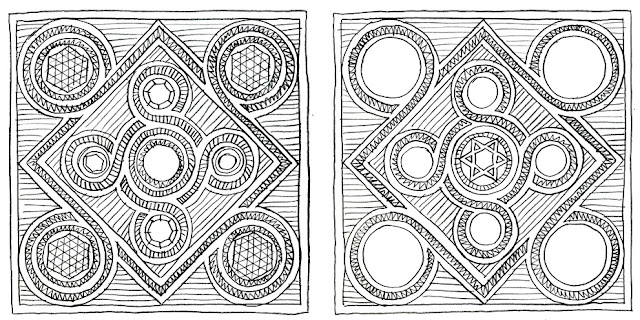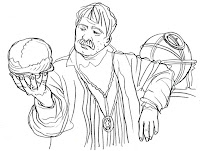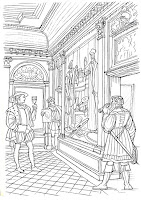A hypothesis from the book entitled: The Ambassador and the Pharaoh. The famous anamorphosis of the Ambassadors (that is the distorted skull)
was later painted into the picture, and probably not Holbein’s work.
The floor of Westminster and floor of the Ambassadors are similar
to each other, but they are not exactly the same. The main difference is the hexagram
in the middle of Holbein’s picture. It's hard to imagine that Holbein precisely
constructed the perspective view of a hexagram, and then he covered almost the full
image with the distorted skull. Nota bene: he did not paint such kind of
anamorphosis, not earlier, not later.













